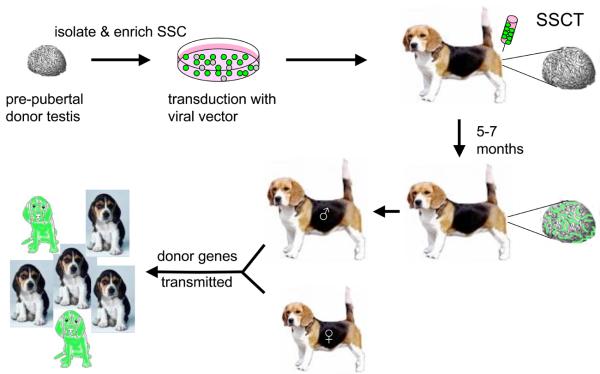Figure 1.
Method of using SSCT to produce transgenic dogs. This diagram presents a schematic approach of how SSCT could be used to achieve transgenesis in a model carnivore species. SSC would be collected from pre-pubertal donor testes to maximize the relative percentage of SSC in the mixed cells collected from the seminiferous tubules. If surface markers for canine SSC are identified, these could be used to enrich the SSC population. The cells would then be incubated with a viral vector carrying a gene of interest. For the purposes of this diagram, the color green denotes a marker such as green fluorescent protein. The transduced cells would be washed and then injected into the rete testis of a recipient that already had its endogenous SSC population depleted (not shown in diagram). After waiting a period of time sufficient to allow the injected SSC to colonize and undergo spermatogenesis, the recipient's semen would be collected and evaluated for the presence of the transgene. Depending on the percentage of sperm carrying the transgene, the recipient could be bred to pass that gene on to offspring. Assuming that the transgene had no impact on either male reproductive fitness or embryo survival, the relative percentage of offspring expressing the transgene would approximate the percentage of sperm carrying that gene.

